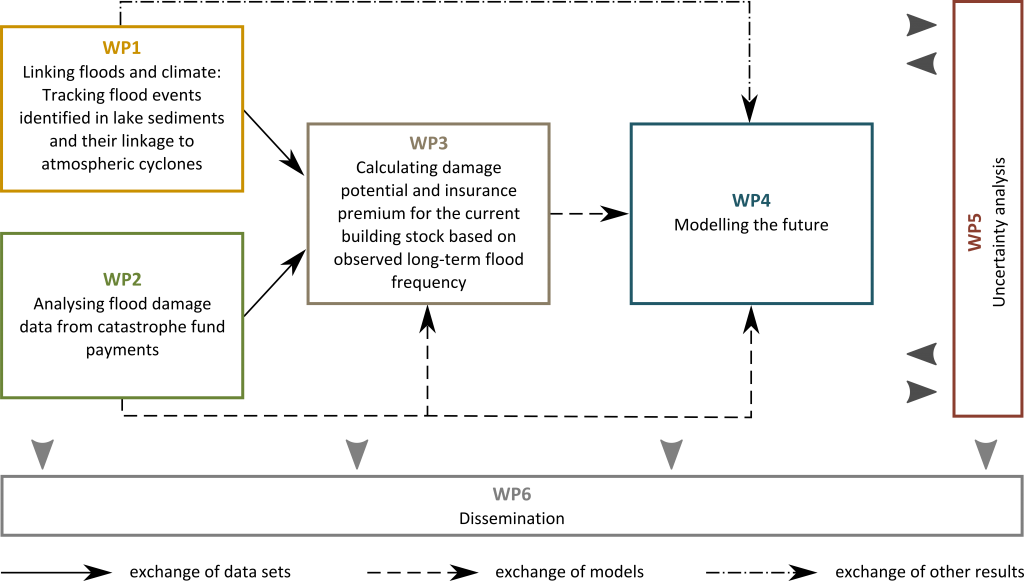FloodRisk-7000 is sub-divided into five scientific work packages complemented by one work package (WP0) for project coordination and one work package (WP6) for the dissemination of results. The work flow and dependencies are illustrated in Figure 1.

Fig1. – Work packages and dependecies.
WP1 is dedicated to track flood events identified in lake sediments and analyse their linkages to atmospheric cyclones. Its aim is to identify atmospheric patterns that lead to major sediment loads, so that investigating these atmospheric patterns under future climate change conditions in WP4 allows drawing conclusions on future changes in the occurrence of flood events. Data sets generated and/or processed within WP1 – including proxy data sets from Lake Mondsee sediments reflecting flood frequency (5145 BC-2005), a cyclone track catalogue (1958-2015), and categorical precipitation data for the region Mondsee (1958-2015) – also find use in WP3, where they are linked to damage data.
WP2 and WP3 both deal with flood damage modelling. Whereas modelling exercises in WP2 are mainly based on flood damage data, the additional consideration and incorporation of sediment records, cyclone tracks and heavy precipitation events is subject of WP3. It includes the actuarial analysis of the flood information gained from sediment records e.g. by means of structural models and the analysis of the linkage between damage data and sediment records, cyclone tracks and heavy precipitation events, respectively. Methods applied to analyse and model flood damages comprise extreme value theory and COPULA dependence models. Anticipated results include improved estimations on past and current flood damage potentials and the associated actuarially fair insurance premiums. From a geographical point of view, flood damage modelling will focus on a broadly defined area around Lake Mondsee, including (parts of) Salzburg, Upper Austria, Lower Austria and Styria.
Investigating future flood damage potentials and the associated insurance premiums is subject of WP4. Scenarios on changes in heavy precipitation occurrence and scenarios on the development of the future building stock (value) serve as input for the flood damage models developed in WP2 and WP3 to simulate future flood damages.
WP5 describes and assesses the uncertainties arising throughout the modelling chain, including uncertainties related to the dating of flood events in sediment record data, uncertainties related to climate modelling and flood damage modelling as well as uncertainties arising from the interplay of the single modelling steps. Moreover, the uncertainty reduction resulting from the novel approaches applied in the current study are quantified.
